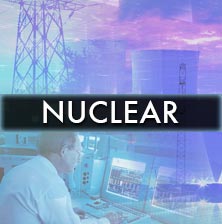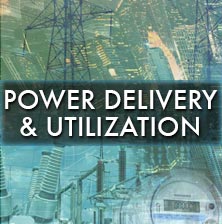The following is a small selection of items recently published by EPRI. To view complete lists of your company-funded research reports, updates, software, training announcements, and other program deliverables, log in at www.epri.com and go to Program Cockpits.

In reactor pressure vessel boundary components made of nickel alloys, stress corrosion crack growth has been a key factor in setting inspection intervals and considering life extension of nuclear plants. EPRI now seeks to use stress corrosion crack initiation in the same way. Researchers conducted lab tests on stress corrosion crack initiation in Alloys 600/182 (older generation) and Alloys 690/152/52 (newer generation) used in reactor pressure boundary structures.

This document describes the technical basis for designing eddy current testing demonstration programs for nuclear plant materials susceptible to stress corrosion cracking. (An eddy current probe sends an electric charge through a coil to produce an electronic wave, which is bounced off a metal surface and recaptured. Changes in electromagnetic signals as the probe travels across the metal surface indicate changes in the metal’s structure.)

Nuclear plant operating experience has indicated that thermal fatigue cracking can occur in a shallow cracking network (called crazing) or as isolated cracking. This report provides the technical basis for mockup fabrication and nondestructive evaluation procedures for piping and nozzles susceptible to thermal fatigue damage.

This study examines the feasibility of miniature, remote-powered, wireless vibration sensors that can be attached to blades in operating steam turbines and compressors. Vibration of these blades can lead to costly damage. Specific areas of investigation include comparison of three options for continuous power supply; and the feasibility of wireless vibration sensing at the blades’ extreme acceleration.

In the electric power industry, a common set of cyber security metrics can be used for benchmarking and data analytics. In this research, EPRI is developing, testing, and refining methods to quantify the effectiveness of cyber security controls and to compile meaningful cyber security information for various stakeholders. Researchers are testing 60 metrics using real-world data from EPRI-member utilities.

Penstocks (pipes that carry water from a hydropower facility’s reservoir to the generator) are difficult to access and inspect. This report discusses tools and service providers for safe, effective penstock inspection; related research; and R&D plans.

In addition to their primary purpose of reducing nitrogen oxides, selective catalytic reduction catalysts in power plants oxidize mercury, a beneficial side-reaction facilitated by halogens (mainly chlorine and bromine) in the flue gas. Certain flue gases, such as those associated with firing low-halogen coals, can benefit from halogen supplementation. To better understand catalyst mercury oxidation associated with bromine supplementation, EPRI conducted laboratory tests on catalyst samples, field tests using EPRI’s portable catalyst test facilities, and full-scale tests on a large commercial selective catalytic reduction reactor.

Some mineral oil–filled transformers manufactured before polychlorinated biphenyls (PCBs) were banned in 1978 may contain PCBs. With 350,000 records, this database enables the user to enter information about an oil-filled transformer and learn the PCB contamination levels of similar transformers from the same manufacturer, helping to assess the likelihood of contamination for the unit in question.

Decades of operating nuclear experience have shown that foreign objects in steam generator tube bundles can lead to costly damage. When subjected to a rapid water flow, an object’s repeated motion can wear a tube’s surface, causing a leak. This report describes research to develop a model to estimate how long it takes for a foreign object to cause wear to a specific depth. Such a tool can inform decisions on retrieval of objects.

This report discusses challenges with microgrid valuation, highlighting how the objectives of microgrid projects can inform assessments of their costs and benefits. It outlines a systematic cost-benefit analysis approach, adapted from EPRI’s Integrated Grid Framework.

The report discusses key market and policy trends impacting demand response programs and technologies. Drawing on literature reviews and industry interviews, it identifies promising demand response strategies for industrial customer sectors such as refrigerated warehouses and data centers.

This report is a comprehensive technical resource on live line work, including North American and international standards, principles, tools, and training resources. It’s intended for utility personnel engaged in any aspect of live work, from transmission maintenance supervisors to live-line workers in the field.